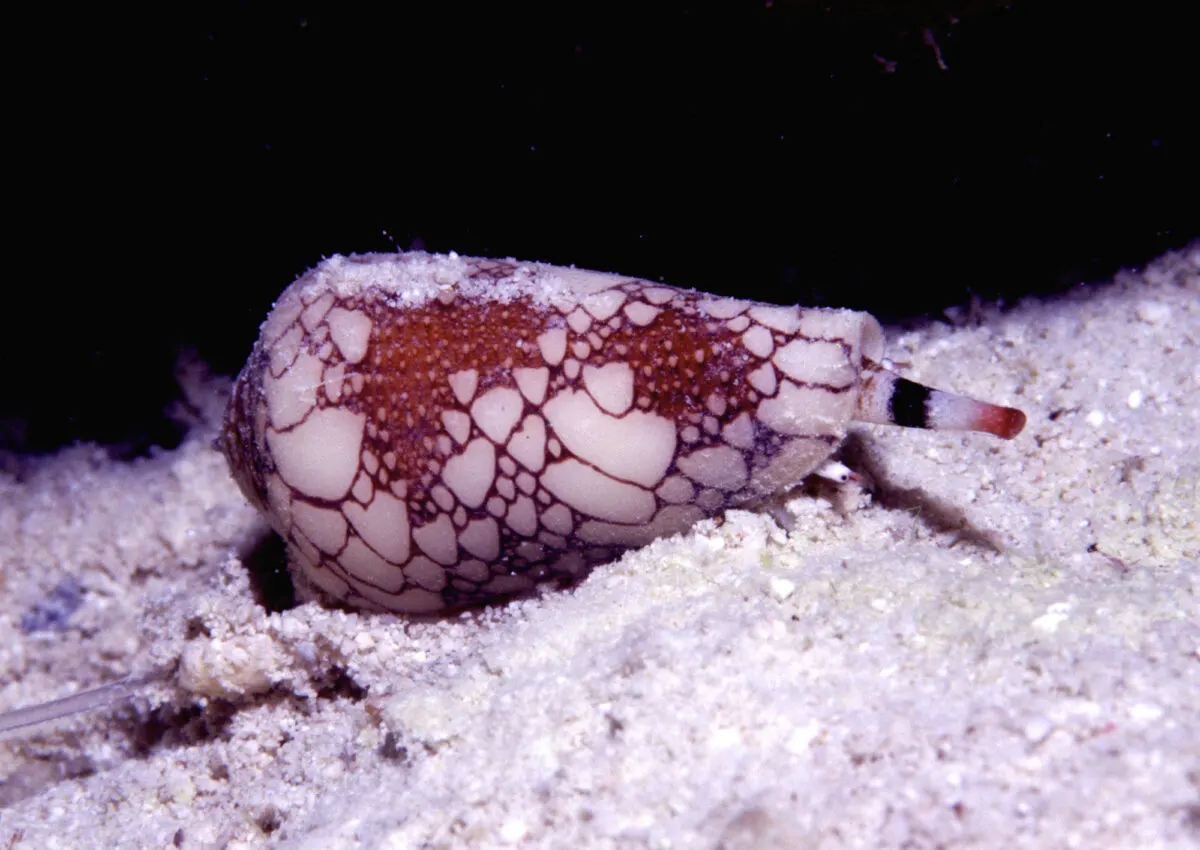The Cone Snail sports a beautiful shell, but also contains a lethal bite – here’s all you need to know in case you get bitten or stung by one.
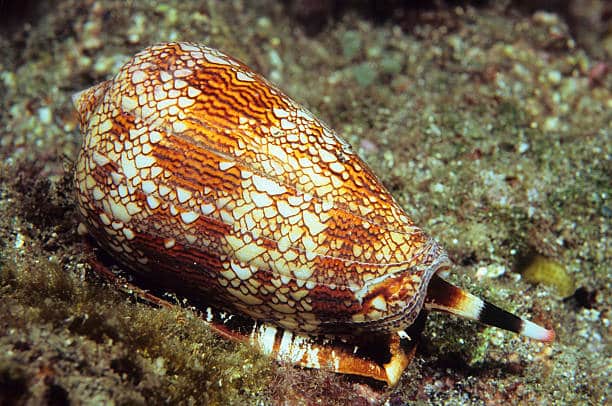
The cone snails exhibit extraordinary adaptations and behaviors that make them fascinating invertebrates.
These marine snails have beautiful and intricate shells, which are highly sought after by collectors and can fetch high prices on the black market. However, the danger of encountering a cone snail in the wild should not be overlooked.
With over 800 species of cone snails, each with its unique venom composition, it is crucial to understand the risks and take appropriate precautions. This guide will delve into the biology and ecology of cone snails. But, more importantly, we’ll provide practical advice for staying safe in their habitat.
Whether you are a beach enthusiast, a diver, or simply curious about these enigmatic creatures, this guide will provide valuable insights and knowledge about cone snails and their bites.
Key Points
- Cone snail venom consists of various compounds that can cause severe consequences if not treated promptly.
- Symptoms of a cone snail bite include numbness, paralysis, breathing difficulties, and even death.
- Cone snail venom has beneficial substances for developing painkillers and treating neurological conditions.
- Immediate pain, swelling, and respiratory distress are common symptoms of a cone snail bite.
- Cone snail venom can cause cardiovascular failure, paralysis, loss of sensation, vision changes, and gastrointestinal symptoms.
- Seeking medical attention promptly is crucial for treating cone snail bites, and immobilizing the bite site is recommended.
Overview of Cone Snail Bite
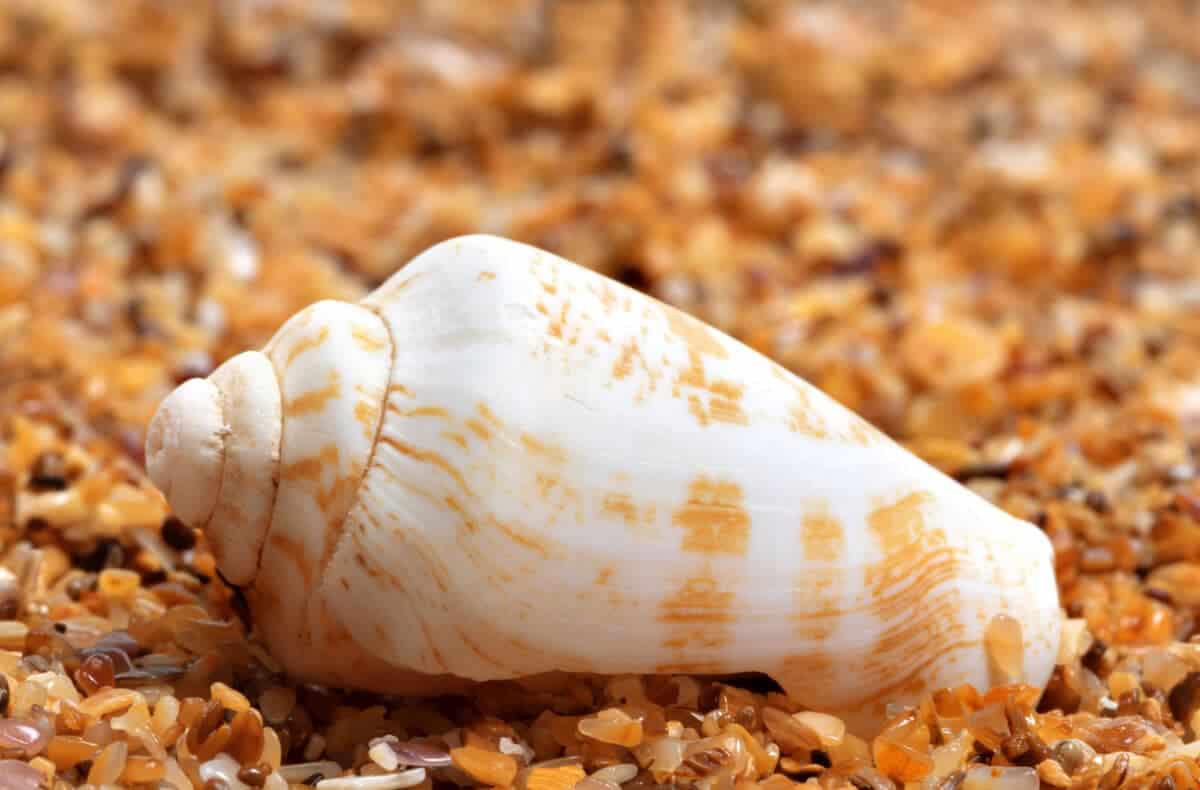
Cone snails are marine animals with a powerful venomous sting. When cone snails feel threatened or disturbed, they can inject venom into their prey (or humans.) This venom consists of various compounds that target different systems of the human body, potentially resulting in severe consequences if not treated promptly.
The symptoms of a cone snail bite may include numbness, paralysis, breathing difficulties, and even death. Despite their dangers, cone snail venom has proved beneficial in medicine. It contains substances that can help develop painkillers and treat neurological conditions.
Want to compare to another snake bite? herefore, understanding the cone snail bite is crucial for those who venture into the ocean, as well as for the scientific community interested in studying these remarkable creatures.
Symptoms of Cone Snail Bite
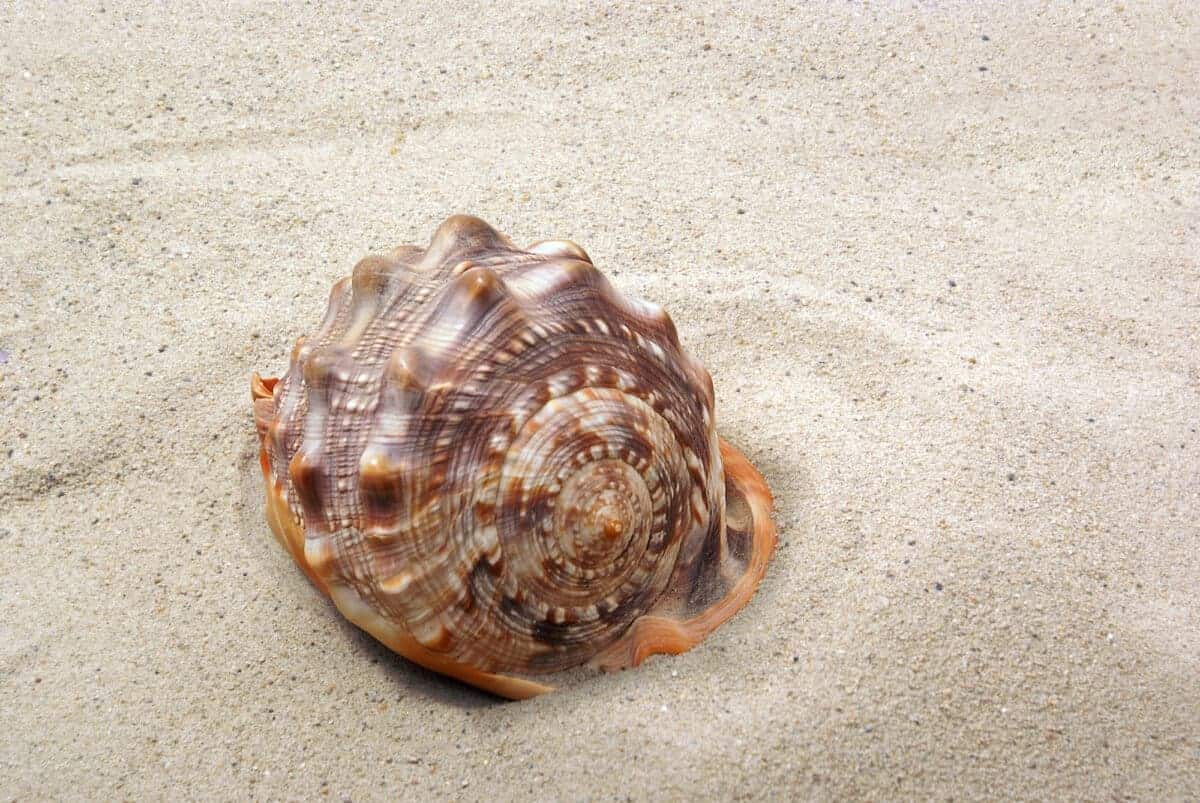
Cone snail bites occur when a person comes into contact with the evil harpoon-like tooth of the snail. While snails are not aggressive and typically only attack when they feel threatened, accidental contact can occur while swimming, snorkeling, or wading in tropical waters.
The venom of cone snails is a complex cocktail of neurotoxins, which can cause a range of symptoms that vary based on the species of snail and the amount of venom injected. Several prevalent symptoms include:
#1 Respiratory Distress
Depending on the type and quantity of venom, cone snail bites may cause respiratory distress, making it difficult for the person to breathe. Worst case, it can even lead to respiratory failure. It is particularly dangerous if the person is in the water at the time of the bite, as they may struggle to reach the surface to get air.
#2 Cardiovascular Failure
In severe cases, cone snail bites can lead to cardiovascular collapse and death. It occurs when the venom causes a rapid drop in blood pressure, leading to a loss of consciousness and potentially fatal complications.
#3 Immediate Pain and Swelling
Cone snail venom contains a complex mixture of toxins that cause intense pain and swelling to the area surrounding the bite. The pain may be described as a sharp, stabbing sensation, and the affected area may become red and swollen.
#4 Paralysis
In some cases, cone snail venom can cause paralysis. It can occur within minutes to hours after the bite and usually starts with mild weakness in the affected limb. As the venom circulates in the body, it may cause a progression of paralysis that affects additional muscles, including those in charge of respiration.
#5 Loss of Sensation and Prickling
Cone snail venom can also result in a sensation of numbness and a prickling feeling in the affected area. It may be accompanied by muscle weakness, cramping, and a loss of coordination.
#6 Vision Changes
Some species of cone snail venom can affect their victim’s vision. This may include blurred vision, double vision, or even temporary blindness.
#7 Gastrointestinal Symptoms
Cone snail venom can also impact the gastrointestinal system, leading to symptoms such as queasiness, emesis, and diarrhea.
If you or someone you know has been bitten by a cone snail, it is crucial to seek medical attention promptly. Cone snail bites can be life-threatening, and prompt treatment can be critical for a successful outcome.
Treatment of Cone Snail Bite
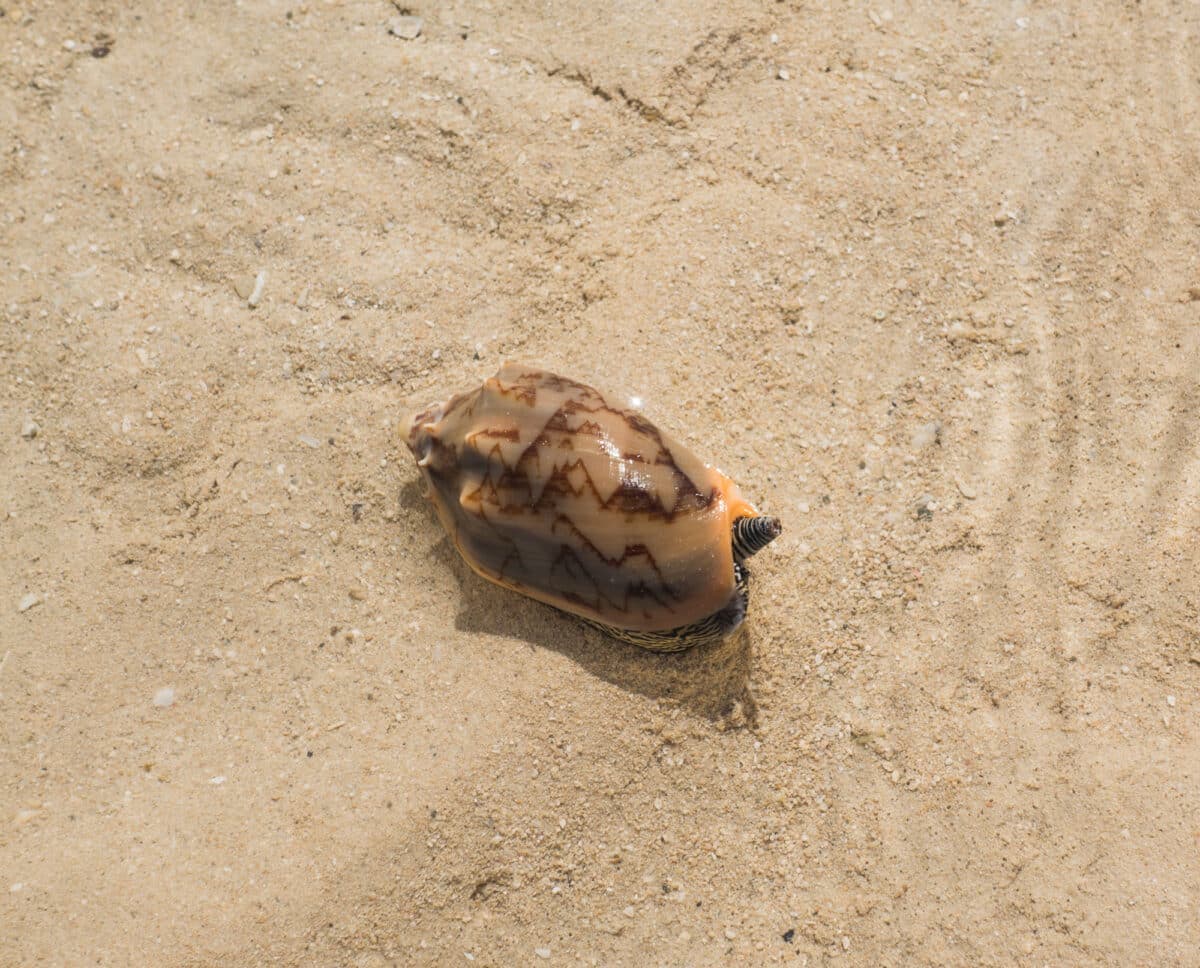
Bites from cone snails are a severe medical emergency that demands immediate attention. Here are the actions to be taken if you or someone else is bitten by a cone snail.
Seek Medical Attention Immediately
When you suspect a cone snail has bitten you or someone else, seek medical attention immediately. Even if you don’t feel any pain or experience any other symptoms, it is important to get checked. Some cone snail venoms act very quickly and can cause paralysis and death within hours.
Keep the Bite Site Immobilized
While waiting for medical attention to arrive, keep the bite site immobilized. It is not advisable to attempt extracting the venom by sucking it out or cutting the bite site, as this can worsen things. Avoid washing the wound or applying ice or heat to reduce pain, as these can cause the venom to spread more rapidly.
Instead, keep the affected limb still and immobilized to slow down the venom’s spread.
Administer Pain Medication
Cone snail bites can be incredibly painful, and managing this pain as best as possible is important. The medical professionals treating the edge may administer pain medication to help alleviate this.
Use Ventilator Support
Most cone snail venom affects the respiratory muscles, making breathing difficult or impossible. Artificial ventilators may be required to ensure that the affected person can breathe.
Antivenom Treatment
Antivenom treatment is the only effective treatment for cone snail bites. The therapy entails administering particular antibodies to counteract the poisonous effects of the venom. Antivenom should be used with other treatments for the best chance of survival and recovery.
Prevention of Cone Snail Bite
Among sea creatures, cone snails are one of the most perilous. While seeking immediate medical attention if you’re bitten is important, the best way to is to avoid it altogether. Below are some suggestions to safeguard yourself from a cone snail bite:
Avoid Touching or Handling Cone Snails
Cone snails are generally not aggressive but can deploy their venomous harpoon-like needles when they come in contact with their prey or threat. Usually, they inhabit shallow waters, secluded coves, and coral reefs. If you come across a cone snail, it’s advisable to maintain a safe distance and refrain from touching or handling them.
Wear Protective Clothing and Footwear
Protective clothing and footwear are important when swimming, diving, or wading in the ocean – especially if you know that cone snails are present in the area. Wetsuits, gloves, and booties are useful for avoiding contact with cone snails. They can also protect you from other dangers, such as stinging jellyfish, sharp corals or rocks, and the sun’s harmful rays.
Stay Alert and Aware of Your Surroundings
Stay alert to any signs of cone snails or other potentially dangerous sea creatures when swimming or diving. Be aware of your surroundings, and avoid entering rocky or coral-laden areas where cone snails and other hazardous creatures reside. Always swim or snorkel with a buddy or in a group, and stay within the designated swimming areas.
Read Local Warnings and Signage
Local governments and conservation groups post warnings and signage in areas with abundant cone snails and other dangerous sea creatures. Read and follow these warnings, and always respect the markings and barriers in place to protect you.
Conclusion
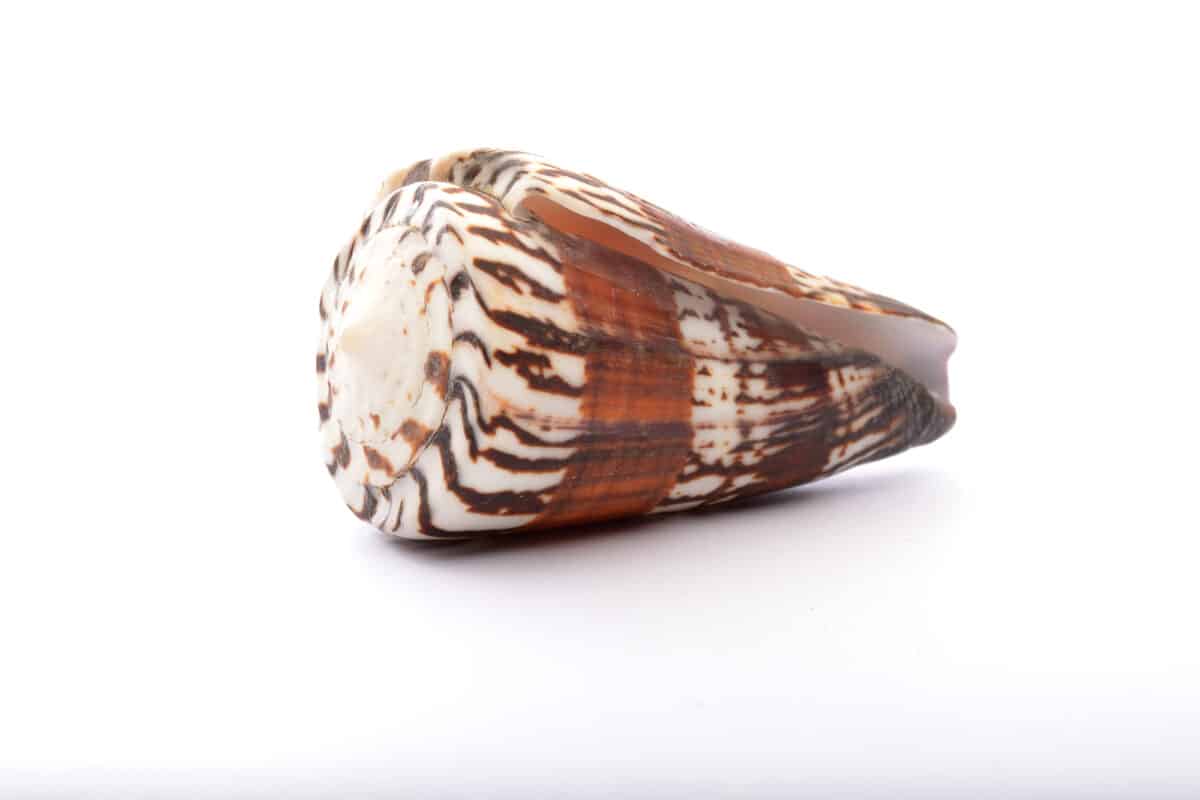
Although a cone snail bite is frightening, it can often be avoided. You can take steps, such as educating yourself about the different types of cone snails and their tell-tale characteristics so you know how to identify them in the future.
When you’re in or near tropical waters, stay vigilant and keep an eye out for these brightly colored creatures. Stay protected by wearing thick closed-toe shoes and meticulously checking your gear before donning it. Avoiding contact with vulnerable areas on their shells can reduce the chances of getting an accidental misstep that could result in a toxic interaction.
Keep a careful watch around rocks, as this is where they tend to hang out. Awareness and preparation are key to protecting yourself from these insidious threats in exotic locales.
So, before visiting any beach or coastal area, ensure you have all the necessary knowledge to prevent a potentially lethal cone snail bite!
Thank you for reading this article! Learn about another painful sting from a sea-resident in this post, or discover the oldest living animal.
Join our Forum for free today!

- Signs Of Coyotes Visiting Your Property - July 23, 2024
- Beware Of The Rabid Wolf Spider In The United States - July 23, 2024
- 12 Flowers & The Beautiful Birds They’ll Attract To Your Yard - July 23, 2024

